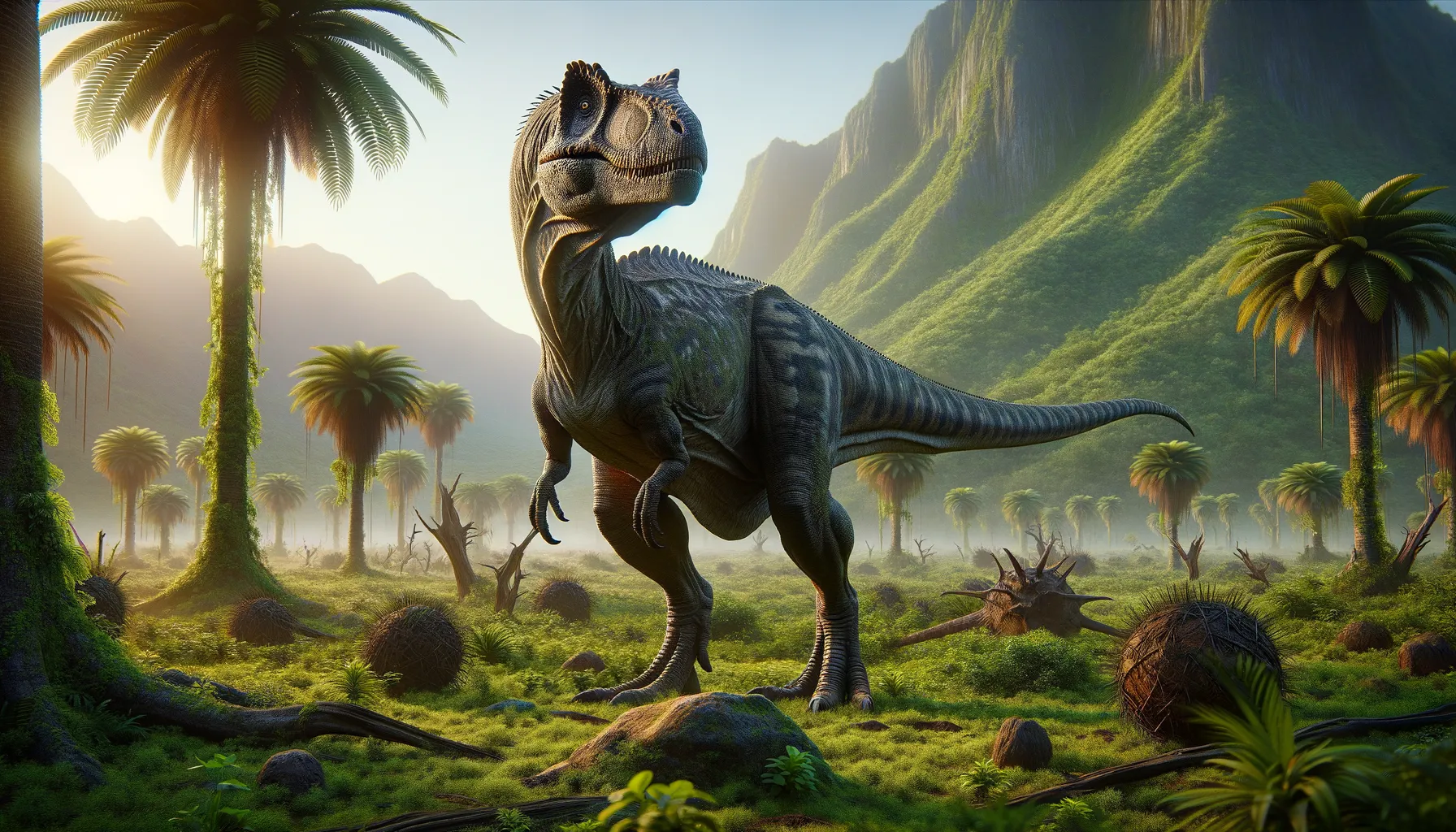
Rahiolisaurus
A predatory mystery from the Cretaceous past!
Period
Cretaceous
Length
Estimated 8 meters (26 feet) in length.
Height
Around 2 meters (6.5 feet) tall.
Weight
Approximately 700 kg (1,543 lbs).
Rahiolisaurus was a theropod dinosaur known for its distinct features and medium build. Unearthed in India, this predator roamed the earth during the late Cretaceous period. With several unique physical characteristics, Rahiolisaurus provides valuable insights into the diversity and adaptations of carnivorous dinosaurs in its region. Its discovery significantly contributed to understanding the dinosaur distribution in the Indian subcontinent.
Diet
Rahiolisaurus was carnivorous, likely hunting smaller herbivorous dinosaurs and scavenging when necessary. Its diet might have occasionally included fish or other available meat sources in its environment.
Hunting
This dinosaur used its speed and sharp teeth to catch prey, working efficiently as a solitary hunter. It may have used ambush tactics, taking advantage of its environment to approach unsuspecting creatures.
Environmental challenges
Rahiolisaurus lived in a changing landscape, facing shifting climates and seismic activity. Prey availability would have been a constant challenge, requiring it to adapt its hunting strategies. It also had to compete with other carnivores, necessitating adaptation in behavior and possibly territory range.
Speed
Medium-speed theropod dinosaur.
Lifespan
Lived around 20 to 30 years.
First discovery
Discovered in 2005 in India.
Fun Facts
- Rahiolisaurus is a theropod dinosaur that lived around 70 million years ago in what is now India.
- The name 'Rahiolisaurus' means 'lizard from Rahioli', referring to the village in Gujarat, India, where its fossils were discovered.
- Rahiolisaurus was a carnivorous dinosaur, meaning it primarily ate meat.
- Fossils of Rahiolisaurus were first unearthed during a large excavation effort that revealed multiple dinosaur species at the same site.
- The dinosaur is thought to have been around 8 to 12 meters long, making it a sizable predator.
- Rahiolisaurus is part of the family Abelisauridae, which includes other predatory dinosaurs known for their short, stubby arms.
- Though mostly found in India, close relatives of Rahiolisaurus have been discovered in South America, highlighting fascinating ancient connections between these regions.
Growth and Development
As it grew, Rahiolisaurus likely underwent significant physical changes, developing stronger limbs and sharper teeth. Juveniles may have been more vulnerable to predation, requiring rapid growth to reach a more defensible size. Its growth rate might have been influenced by the availability of food and environmental conditions.
Habitat
It inhabited areas now known as the Indian subcontinent, which featured diverse terrains such as forests, rivers, and floodplains. The region's climate was warm, providing a favorable environment for various plant and animal life. Being in such a habitat demanded adaptability to both dry and lush periods.
Interaction with other species
Rahiolisaurus likely encountered various herbivorous species, which it hunted. It competed with other predators, which may have influenced its territorial and social behaviors. Interactions were not limited to hunting; scavenging remains from other kills was probably common.
Natural lifespan
Rahiolisaurus enjoyed a natural lifespan of up to 30 years.
Reproduction
Rahiolisaurus laid eggs, likely in nests within more secluded and safe areas. The nesting behavior might have included protective measures to guard eggs against predators. Hatchlings required a nurturing environment to improve survival chances.
Social behaviour
While primarily solitary, Rahiolisaurus may have gathered during mating seasons. Juveniles could have remained with the mother until reaching a suitable age of independence. Social interactions were likely centered around territorial disputes and hunting opportunities.
Fossil locations
Fossils of Rahiolisaurus were primarily found in Gujarat, India. This area is known for yielding several significant dinosaur fossils, allowing better insight into the Cretaceous period life. The discoveries in Rahioli feature a broad array of specimens, highlighting its presence and adaptation to the region.
